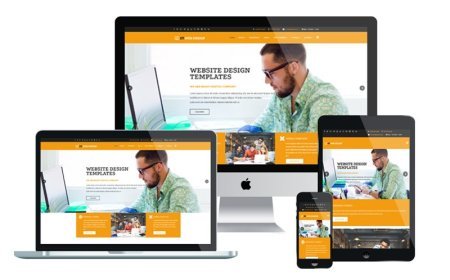What is the Primary Benefit of Using Flat Panel Displays in Educational Settings?

In the evolving landscape of education, the integration of technology into classrooms has fundamentally transformed the way teaching and learning occur. Among the most impactful technological tools is the interactive flat panel, a digital display that has become a cornerstone of modern educational environments. These cutting-edge devices not only replace traditional whiteboards but also offer a variety of interactive features that enhance the learning experience for both teachers and students. While the interactive flat panel boasts numerous advantages, the primary benefit it offers is the ability to foster deeper engagement and interaction in the learning process.
What are Interactive Flat Panels?
Interactive flat panels are large, touch-sensitive displays that combine the functionality of traditional whiteboards with modern digital technology. These panels allow teachers and students to interact directly with content on the screen, facilitating a more dynamic and engaging classroom environment. Often equipped with high-resolution displays, touch capabilities, and multimedia integration, interactive panels enable teachers to present a variety of learning materials, from videos and images to interactive lessons and online resources.
These devices come with built-in software that allows teachers to write, draw, and highlight content directly on the screen, as well as to manipulate images, diagrams, and documents. Multi-user functionality allows multiple students to engage with the screen at once, encouraging collaboration. In addition, interactive flat panels can be integrated with other classroom technologies, such as tablets, laptops, and even cloud-based learning platforms, making them an all-in-one tool for interactive learning.
The Primary Benefit: Enhanced Engagement and Interaction
The primary benefit of using interactive flat panels in educational settings is their ability to enhance student engagement and interaction. Engagement in the classroom has a profound impact on student learning outcomes. When students are actively involved in lessons and can interact with the material being taught, they are more likely to retain information, participate in discussions, and feel motivated to learn. Interactive flat panels address these needs by transforming the classroom into an interactive learning space.
Here are some specific ways in which interactive flat panels achieve this primary benefit of increased engagement and interaction:
1. Multi-Sensory Learning
Interactive flat panels support a variety of content types, including text, audio, images, and video. This multi-modal approach caters to different learning styles, making lessons more accessible to a diverse range of students. For example, visual learners can benefit from interactive diagrams, animations, and videos, while auditory learners can engage with audio content and voice-based interactions. Kinesthetic learners can interact physically with the panel by using the touch functionality to drag and drop, write, or manipulate objects.
This multi-sensory learning approach helps capture and hold students' attention, making lessons more engaging and memorable. The opportunity for students to interact with the content directly—whether through touch, writing, or collaboration—creates a richer, more immersive learning experience that supports higher levels of concentration and participation.
2. Interactive Learning Activities
Interactive flat panels provide a range of tools for creating engaging, hands-on learning activities. For instance, teachers can use interactive software to design quizzes, games, and problem-solving exercises that students can actively participate in. Whether it’s answering questions in real-time, collaborating on a group activity, or exploring a complex concept through interactive simulations, students can engage with the material in ways that go beyond passive listening or reading.
These activities also allow teachers to track student progress and provide immediate feedback. Real-time responses can be used to adjust the pace of the lesson, providing more challenging tasks for advanced students while offering additional support for those who may need it. This level of interaction enhances student ownership of the learning process, as they are no longer just passive receivers of information but active contributors to their educational journey.
3. Collaboration and Peer Interaction
One of the most powerful features of interactive flat panels is their ability to facilitate collaborative learning. Many interactive panels are equipped with multi-touch technology, which allows several students to engage with the screen simultaneously. This feature encourages teamwork and peer-to-peer learning, which is especially beneficial in fostering communication skills, critical thinking, and problem-solving abilities.
In group settings, students can work together to complete tasks, brainstorm ideas, or solve problems on the interactive panel. Teachers can easily monitor their progress, offer guidance, and encourage discussions among peers. Collaborative learning has been shown to improve understanding and retention of concepts, as students often explain material to each other in ways that make sense to them, deepening their understanding of the subject matter.
4. Increased Student Motivation
In traditional classrooms, students can often become disengaged due to passive learning methods or repetitive instructional techniques. Interactive flat panels break this monotony by introducing a range of dynamic features that capture students’ attention. The engaging visuals, interactive lessons, and ability to interact directly with the content make learning more enjoyable for students.
Furthermore, these panels often include gamification elements, such as scoring, badges, and challenges, which help increase student motivation. The instant feedback provided through quizzes and activities helps students feel a sense of accomplishment and encourages them to stay engaged. By making learning more fun and interactive, flat panels motivate students to actively participate and excel in their studies.
5. Instant Access to a Wealth of Resources
Interactive flat panels make it easy for teachers to access and integrate a variety of digital resources into their lessons. Whether it's a video on a historical event, a live demonstration of a science concept, or a virtual tour of a museum, the panel can instantly bring rich, diverse content into the classroom. This access to real-time information allows lessons to be more relevant, up-to-date, and connected to the world outside the classroom.
Students, too, can use the panel to explore educational resources independently or collaboratively. For instance, they can conduct research, access digital textbooks, or use interactive apps and learning tools to deepen their understanding of a subject. This wide array of resources helps students connect with the material in a more comprehensive and meaningful way, further boosting engagement and learning outcomes.
Additional Benefits of Interactive Flat Panels
While the primary benefit of using interactive flat panels is enhanced engagement and interaction, these devices also offer several secondary advantages that support effective teaching and learning:
- Flexibility in Teaching Methods: Teachers can easily switch between different modes of teaching, from direct instruction and group work to independent learning and digital exploration.
- Real-Time Assessment: Teachers can conduct formative assessments through quizzes and interactive activities, providing immediate feedback to students.
- Inclusivity: Interactive panels can be used to support students with diverse learning needs, including those with physical disabilities, visual impairments, or learning challenges.
- Sustainability: By eliminating the need for paper handouts, whiteboard markers, and other physical resources, interactive panels contribute to a more sustainable classroom environment.
Conclusion
The primary benefit of using interactive flat panels in educational settings is their ability to enhance student engagement and interaction. By providing a dynamic, multi-sensory learning environment that encourages collaboration, participation, and exploration, these devices foster deeper student involvement and a more personalized learning experience. With interactive lessons, real-time assessments, and instant access to a wide array of digital resources, interactive flat panels have become an indispensable tool in modern classrooms, helping both teachers and students thrive in the digital age. As technology continues to evolve, the role of interactive flat panels in education will only grow, offering new ways to connect with students and enrich their learning experiences.
What's Your Reaction?































































